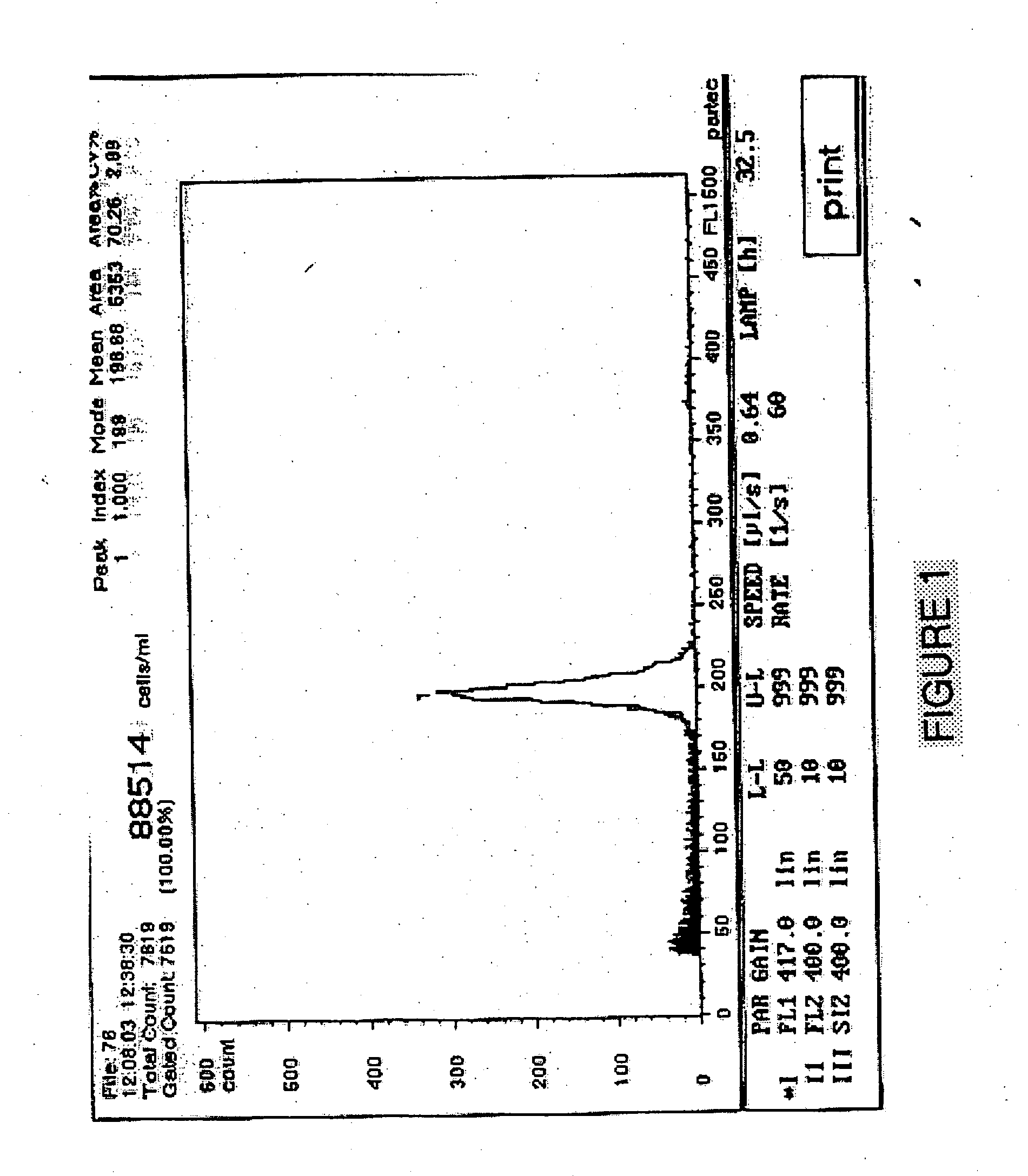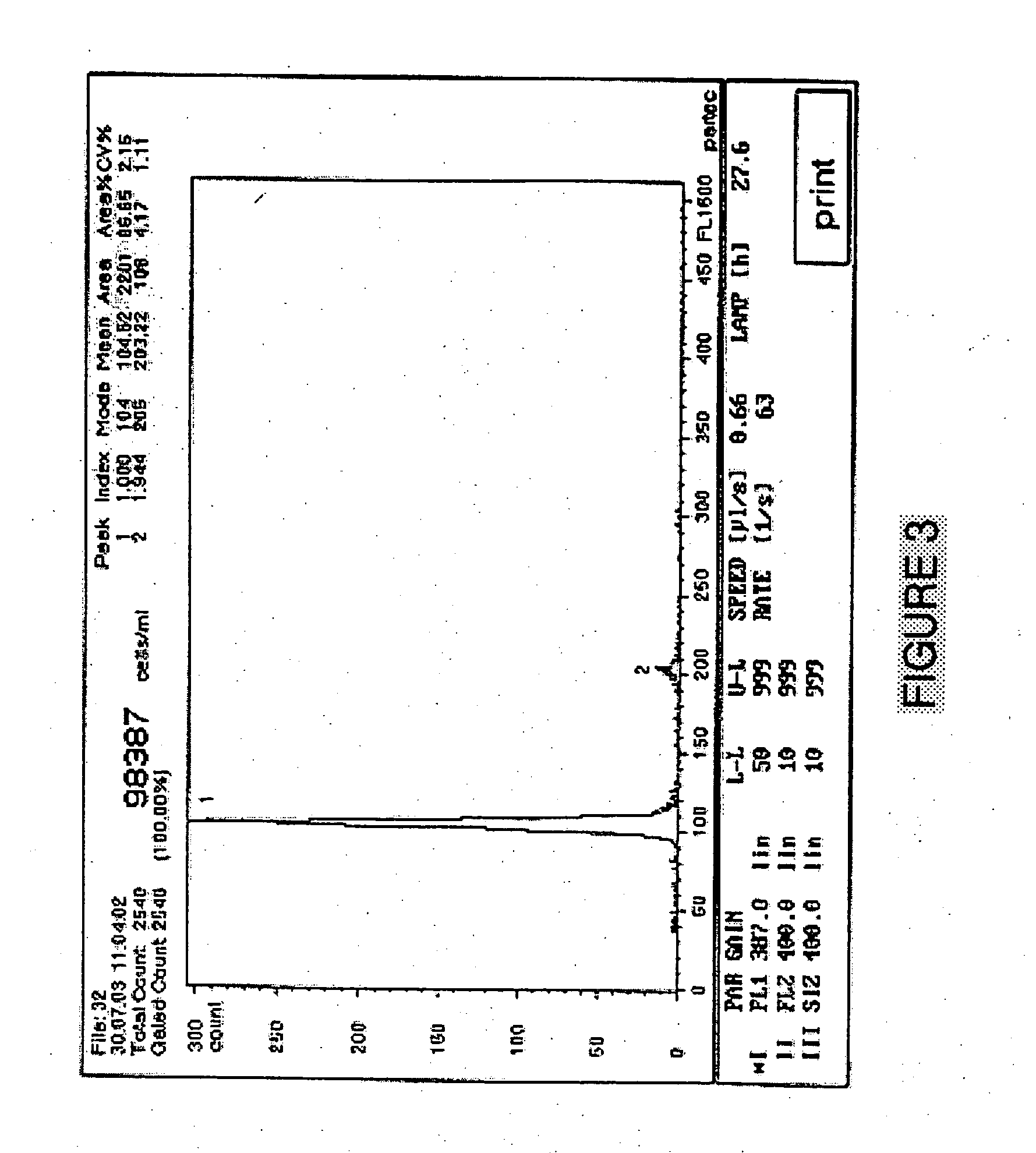Sterilization of marine organisms by manipulation of DNA content
a technology of dna content and sterilization, applied in the field of fish production and other marine organisms, can solve the problems of inadequate water conditions reported for zebrafish
- Summary
- Abstract
- Description
- Claims
- Application Information
AI Technical Summary
Benefits of technology
Problems solved by technology
Method used
Image
Examples
example 1
Brachydanio rerio
[0038] Tetraploid induction begins by taking the fertilized eggs of a fish and timing a shock to the eggs so that the embryo develops as a tetraploid instead of a diploid. FIG. 1 shows data collected from a fin clipping of normal diploid (2n) Zebrafish using a fluorescence activated cell sorter (FACS). The method for inducing genome duplication (octoploidy in Zebrafish (Danio rerio)) involves fertilizing a clutch of eggs via in vitro fertilization and administering a heat shock to the clutch precisely twenty minutes post fertilization, and for a duration of about two minutes at a temperature of about 41.3° C. to about 42.0° C. The heat shock does not have to be exactly two minutes, and somewhat shorter durations of about 1 min, 45 sec or longer (e.g., 2m, 15 sec) also suffice. FIG. 2 gives a schematic illustration of the temperature protocol. It is important to note that the approximate temperature ranges and time ranges given for the protocols discussed throughout...
example 2
Barbus conchonius
[0045] Conditions used and documented as successful for the rearing of microinjected Zebrafish (Danio rerio) larvae proved to be inadequate when transferred across species to Rosy Barbs. Survival rates of zero were frequently observed in this situation. Therefore, research into the difference of the two species yielded a suggestion to change the water quality parameters in two distinct manners. The adult Rosy Barb broodstock is kept in aqueous medium at a pH of 6.0 while the Zebrafish are kept at pH 7.0. Also, the Rosy Barbs are far more productive when organic material is added to the aqueous medium, whereas Zebrafish do not require this to be prolific. One method for adding organic material is to soak the aqueous medium in peat. Another method is to use an organic liquid concentrate that is added to the broodstock aqueous medium. The latter method is what was used with the Rosy Barbs here at PiPets. So those two parameters were changed to be more appropriate for ...
example 3
Protocol for Salmon
[0054] Another example is salmon, which spawn at roughly ˜4° C. in the wild. Because this temperature is much lower than that of Rosy Barb, the temperature used for each of the steps will likely need to be about 20° C. lower than that used for Rosy Barb. Using Salmon as the example, the heat shock protocol for Step 1 would be performed at a temperature range from about 5° C. to 28° C. Following the heat shock, the temperature for Steps 2-5 would be close to approximately 4° C.
PUM
 Login to View More
Login to View More Abstract
Description
Claims
Application Information
 Login to View More
Login to View More - R&D
- Intellectual Property
- Life Sciences
- Materials
- Tech Scout
- Unparalleled Data Quality
- Higher Quality Content
- 60% Fewer Hallucinations
Browse by: Latest US Patents, China's latest patents, Technical Efficacy Thesaurus, Application Domain, Technology Topic, Popular Technical Reports.
© 2025 PatSnap. All rights reserved.Legal|Privacy policy|Modern Slavery Act Transparency Statement|Sitemap|About US| Contact US: help@patsnap.com



